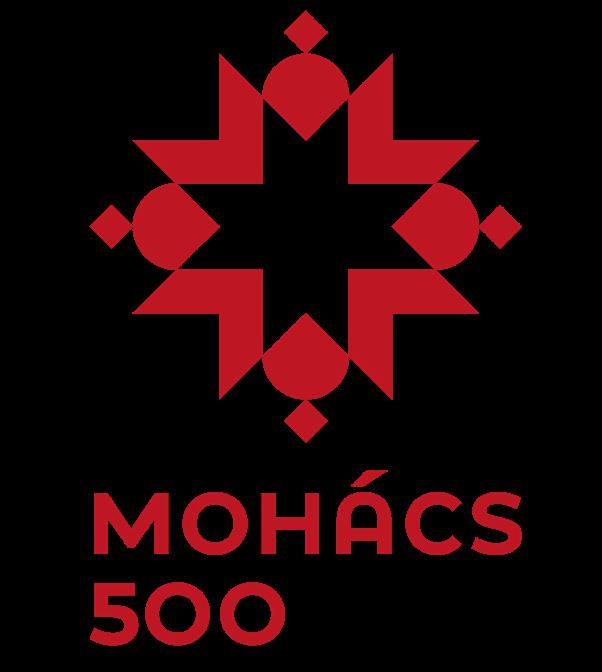Dr János Hargitai, Ministerial Commissioner
Municipality of the City of Mohács and Mohács 500 Nonprofit Ltd.
Directorate of the Duna-Dráva National Park
Janus Pannonius Museum, Pécs
Research Group of the Department of Anthropology, University of Szeged
Institute and Museum of Military History
HUN-REN BTK Institute of History
Hungarian National Archives
University of Pécs
HUN-REN PPKE-PTE Vilmos Fraknói Vatican Historical Research Group
Klebelsberg Centre
Professional Association of History Teachers
Partners: www.mohacs500.hu
More information:
National Heritage Institution, Fiumei Road 16-18, 1086 Budapest +36 1 795 31 79, nori@nori.gov.hu, https://en.nori.gov.hu www.facebook.com/nemzetioroksegintezete
Mohács 500 –The Programme of the National Heritage Institute for the solemn commemoration of the 500th anniversary of the Battle of Mohács.
MISSION & OBJECTIVES
Mercy – Heroism – Central-European Solidarity
In preparation for the 500th anniversary of the Battle of Mohács (1526), the National Heritage Institute has set the following main objectives:
1. Exhumation and dignified reburial of victims from the mass graves discovered at the Mohács National Memorial.
2. Renovation of the National Memorial site.
3. Engaging school-age audiences through experience-based learning as part of the National Pedagogy of Memory Programme.
4. Establishing international professional partnerships.
EXHUMATION –IDENTIFICATION – REBURIAL
According to the latest research, it has been discovered that the mass graves at the Mohács National Memorial contain remains of Christian warriors who were captured during the battle. For nearly 500 years, these executed soldiers laid scattered and unburied in grave pits. In collaboration with the Janus Pannonius Museum (Pécs) and the Department of Anthropology at the University of Szeged, the identified remains will be given a respectful Christian-Hungarian reburial.
Where, when and how?
The reburial will take place at the Mohács National Memorial on the 500th anniversary of the Battle of Mohács (29 August 2026). A chapel will
be built by the initiative and with the support of the National Heritage Institute. The remains of the warriors found in the III. and IV. mass graves will be placed into this chapel’s crypt.
MEMORY PEDAGOGY
The significance of the Battle of Mohács in 1526 and its special place in Hungarian culture of remembrance require the events to be presented in an accessible and immersive manner, especially for young people. In 2022, the National Heritage Institute developed a curriculum-based educational package for the Mohács National Memorial to strengthen the national identity of students in grades 7–11. This complements local museum pedagogy by providing pre-visit classroom exercises, on-site learning and post-visit activities. The methodology is uniform across all memorial sites and is tailored to seperate by age group. It also includes optional, site-specific elements. Our key partners in designing and implementing the programme are the Professional Association of History Teachers and the Klebelsberg Centre.
In 2024, five informative animated shortfilms were produced about the heroes of Mohács and the anti-Ottoman wars, specifically for school-age audiences. Viewers get to learn about II. Louis, the king with a horribly tragic fate; Pál Tomori, the resolute archbishop; Pál Bakics, the Serbian military leader; Štěpán Šlik, the Czech commander; and the famous Zrínyi family. The films aim to bring the legacy of these heroes vividly to for today’s younger generation.
GOING INTERNATIONAL
The Battle of Mohács is not just a Hungarian concern, but an integral part of the wider historical and cultural heritage of Central Europe and Europe as a whole. Our goal is to embed commemorative programmes within an international context. To this end, we are planning an annual academic conference with our partners, featuring international speakers and participants.
Our inaugural conference, which took place in December 2024 at the Castle Garden Bazaar in Budapest, was titled ‚Antemurale Christianitatis – Central Europe and the Western Balkans, Bastions of Christianity’ and formed part of the cultural events of Hungary’s 2024 EU Presidency. The resulting research volumes will be published in two languages.
Our institute has organised various study visits to several Ottoman-era battlefields such as Kosovo Polje, Varna, Udbina and Belgrade. We also plan to hold public panel discussions in Hungary and in other countries that preserve the memory of Mohács, including Belgrade, Prague and Zagreb.
We commemorate the 1526 Battle of Mohács and the centuries-long resistance against the Ottoman Empire in the spirit of fostering international cooperation. Our aim is to establish a network of collaboration and scientific exchange with the countries linked to these historical events.


